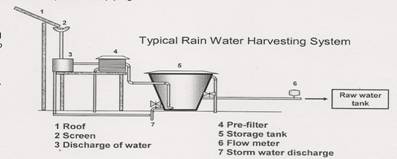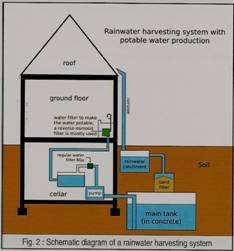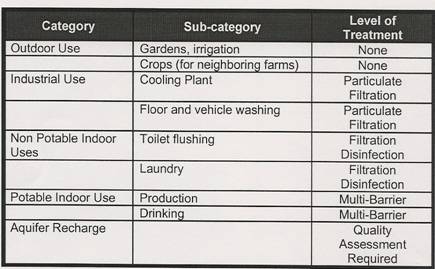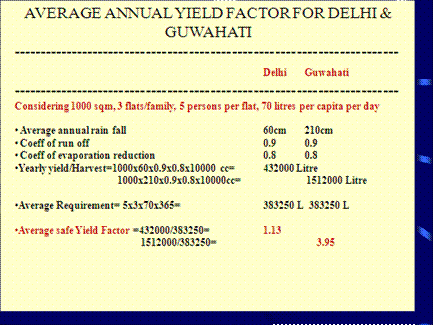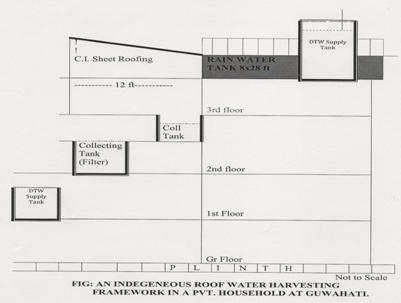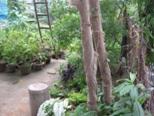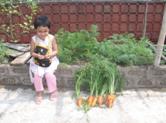– By Bipin Chandra Patwary : Scientist`F` & Head, NIH-Centre for Flood Management Studies, Dispur, Guwahati – 781 00
Abstract
The inter states drainage basins of the mighty Brahmaputra & the Barak represent the hydrologic scenario of almost entire North East India. The paradoxical hydro climatic scenarios of the region are a typical hydrological entity in the world atlas. Endowed with huge water resource potential, while it could be like ‘power house’ and ‘reservoir of the country’, it has the worst water resource problems under the present circumstances rendering untold sufferings and colossal loss to millions every year. The region experiences excessive rainfall and high floods during monsoon months depicting ‘water water everywhere` and also suffers from acute shortage of water even for drinking in non monsoon months ‘echoing ‘not a drop to drink’ in many areas including Cherapunji, the wettest area of the world. During non monsoon months there is ever increasing need to conserve water in the hill states consisting about 70% and now a days even in the plains where prolonged dry spell of more than 9 months could be seen in the recent past. The draft water policy of the state of Assam puts that conservation consciousness would be promoted through education, regulation incentives and disincentives, rainwater harvesting, both by modern scientific methods and traditional methods, would be encouraged and promoted through dissemination of information, demonstration and incentives, efforts would be made to modernize the traditional rainwater harvesting methods through proper input of modern science & technology and Stress would be laid in recharging of groundwater through rainwater harvesting. Under this back drop, the paper describes an individual and indigenous effort of the author in rain water harvesting at Guwahati sustained, replicated and since in operation for more than a decade for various house hold and agricultural uses and also in-situ ground water recharge with minimal know how / technology inputs in it.
1. Introduction:
Bulk of the water in the State of Assam, both surface and groundwater is obtained from rainfall. Assam experiences the predominant influence of the south-west tropical monsoon which reigns from April to October with occasional winter showers. The low clouds of the southwest monsoon after being intercepted by the N.C. Hill range and Naga Patkai range, cause heavy rainfall in the southern part of Assam and precipitate in the Brahmaputra valley; their intensity increasing towards the foothills of the Himalayas. The approach of the monsoon is marked by strong winds, overcast skies and occasional thunder showers, hailstorm and cyclones during April and May and it starts its full play of heavy showers from June. The average annual rainfall in the State varies from 1780 to 3050 mm.
The Guwahati city, the gateway of North East is spread over an area of about 300 Sq. Km on both banks of the mighty Brahmaputra. The city has got several water bodies likeDeepor Beel, a Ramsar site, Soru Sola Beel, Bor Sola Beel etc. and the city is cris-crossed by many tributaries like Bharalu,Morabharalu, Bahini, and Basistha Nalla. Within the city there are many man made fresh water tanks/small lakes built in the long past including Dighalipukhuri, Silpukhuri, Nakkatapukhuri and Jorphukhuri etc. Inspite of all these water sources, the city dwellers suffers from scarcity of water for drinking and other uses at their urban households.
The city is experiencing unprecedented population growth and rapid urbanization as well as industrial development during last 30 years after it became the capital of Assam in seventies. Government water supply schemes so far hardly meet the requirement of 30% of the population. Rest of the dwellers has to make their own arrangement with high personal expenses involved. The rapid depletion of ground water in the city reportedly up to 7 m in places is further complicating the water woes with many areas of the city now lacking ground water reserve.
This calls for in-situ rain water harvesting at every house hold. In fact, very little attempt had been made by Govt or private agencies to harness the abundantly available surface and rain water resources of Guwahati city.
2. Rain Water Harvesting(RWH):
Rainwater harvesting can enable households, factories, schools and offices to overcome their problems of irregular and inadequate water supply or water supply of poor quality. The process involves storing rainwater that falls within one’s premises and re-using it after basic treatment. By using equipment that is easily available, rainwater is diverted towards existing underground tanks or terrace fitted tanks and then supplied to the taps. The purification methods used by households, factories and offices can be used to treat rainwater. Treated rainwater is safe not just for cleaning and washing but also for cooking and personal consumption. The amount of rainfall notwithstanding, people living and working in various types of geographical terrains can harvest rainwater. In the long run, rainwater harvesting will replenish the rapidly depleting ground water levels, and lead to water security and sustainability.
2.1 Review of Basic Components of RWH:
Rainwater Harvesting begins with collection of precipitation from a catchment surface, conveyance of the water, storage, treatment and, finally, the end use. The basic components of a typical RWH system are:
Catchment: The rainfall runoff collection and capture surface such as a roof-top or a paved area.
Initial conveyance system: Gravity-collection of the captured runoff water from the catchment area to storage using gutters, downspouts and piping.
Debris removal systems: Includes first-flush diversion systems, filters, and screens designed to remove debris and dust from the captured rainwater before tank storage.
Storage containers: Storage containers can be rain barrels, tanks, cisterns, or lined pools built of various materials including metal, fiberglass, polypropylene, wood, concrete and masonry or ferro-cement. Storage containers are typically the most expensive component of a RWH system that utilizes water storage for future reuse. These containers could be placed either on surface or sub-surface as sumps.
Final conveyance system: Transfer of stored water to the end use utilizing gravity-stored or pressure pumping.
Water treatment and purification: Depending upon the end-use of the storage water, appropriate water treatment systems, filters and other methods are utilized to sufficiently purify the water for either potable or non-potable end uses. In some cases natural material is used to filter the water for recharging to local groundwater system.
Fig.1: Basic Components of RWH with potable water production
Rain water may be acidic because of dissolved carbon-di-Oxide and Nitrogen in the air. Therefore, treatment to of the harvested rain water is necessary. Treatment level depending upon the end uses may be as follows:
Facility-specific Water Demand – an analysis should be conducted to assess the overall water supply demand, in terms of quantity and quality, desired to be filled by harvested rainwater. As part of this analysis, it is important to consider the end use of collected rainwater.
Rainwater Harvesting Potential (Supply) – an analysis should be conducted following a basic equation like:
RWH Potential (m³) = Rainfall (m) X Catchment Area (m²) X Collection Efficiency Where,
Rainfall – data on rainfall periodicity, duration, patterns, and intensities, measured in meters.
Catchment Area – estimated surface areas and options available for RWH, measured in m².
Collection Efficiency – data estimating the runoff coefficient for a given catchment surface
[Runoff Coefficients: Roof top=0.75-0.95, Paved Area=0.50-0.85, Bare Ground=0.10-0.20, Green Area=o.o5-0.10]
Analysis gathered through a calculation of supply versus demand can be combined into a cost benefit analysis to assess feasibility.
Example RWH Potential Calculation
- Roof (Catchment) area = 6000 sq meters
- Average Annual Rainfall = 1400 mm
- Collection Coefficient = 0.90
RWH Potential = 6000 sq meters * 1.4m * 0.90 = 7,560 cu meters/ year
Comparative Advantages and Disadvantages of RWH Systems:
| Advantages | Disadvantages |
| •If properly implemented, RWH can benefit facility operations and the local community through sustainable resource management | •not applicable in all climatic conditions around the world |
| •free source of water available for capture and storage in most global locations | •performance can be affected by climate fluctuations that sometimes are hard to predict |
| •can provide supplemental, alternative, or primary water supplies | •increasingly sophisticated RWH systems increase complexities in cost, design, operation, maintenance, and size |
| • rainwater available at no cost other than the costs for collection and end-use | • success depends upon proper assessment, planning and design, installation and maintenance of site-specific systems |
| • rainwater recognized as having a highly valued water quality | •there may be poor quality rainwater from storm water runoff(particularly from vehicle parking areas which typically carry oils and greases) |
| • storage of rainwater during periods of high precipitation rates can lessen impacts to the water supply during periods of limited water supply | • collected water quality might be affected by external factors, like lack of proper maintenance |
| • promotes watershed conservation management techniques | • key stakeholders may not have a willingness to partner in the development and ownership of the RWH system. |
| • perceived as proactive action and commands favorable public opinion amongst water use stakeholders | • collection systems require monitoring and continuous maintenance to maintain desired water quality characteristics for water end-use |
| • historical practice widely accepted in many regions of the world | • harvested water volumes can be overestimated or underestimated in the absence of proper design documents |
| • storm water management and reduction practices can positively affect the water load on storm sewers and their ultimate discharge into the environment as well as lessening the impact of soil erosion | • end-use of water dictates required water quality levels and any necessary water treatment |
| • in conjunction with Artificial Aquifer Recharge (AAR) processes, harvested rainwater undergoing aquifer recharging can significantly conserve and even increase the sustainableyield of an aquifer | • over-optimism that RWH is a great solution, both by those implementing the system, or by the surrounding community
• RWH is not an alternative to other efficient methods. |
3. A Success Story of RWH at Guwahati:
In fig. 3, a model calculation [Anand Verdhen,2008] shows that with the rain water harvesting, while Delhi can have 1.13 as average yield factor, Guwahati goes up to 3.95 over the requirements. This amply demonstrates the utility of rain water harvesting to respond to the urban challenges if we are to talk on the issues on water for cities.
Guwahati city is having hundreds of multi-story buildings and high rise complexes-private, community and institutions. With little extra cost, energy and motivation, rain water can be harvested without knowing much about technicalities involved. One such indigenous individual effort could be seen at residence of Mr G Patowary, Jt. Secretary, to Govt of Assam, Health(Rtd.), Zoo Japarigog area (Ph. 9435119571). He has converted the open 4th floor into a roof garden and raising vegetables and flowers throughout the year. It meets 40 percent of vegetables requirement of the household. No chemical fertilizer is used and the vegetables are always harvested fresh and green. Water requirements of crops, washings etc are met with harvested rain with occasional supplements of piped water. It is in operation for last 20 years.
Fig.3: Model calculation for Average safe Yield factor
This attractive individual effort has been replicated by the author at House No.25 at Sewalipath End Right Extension, Hatigaon, Dispur (Ph. 9435343627) with extensions and more provisions. This is in operation since last 15 years. The house is four storied and roof gardens are raised in 1st, 2nd and 3rd floors with provisions to supply/spray harvested rain water in place as and whenever/wherever necessary. Gardens are in strips of about 2 to 4 ft width laid along the edges of roof slabs with two bricks thick masonry walls filled with locally available earth, bio-degradable waste and cow-dung. In 1st floor, a tank for pisciculture has also been constructed and local verities of fishes like Magur(cat fish), Kaoi, Goroi(lata fish), Rahu, Puthi, etc etc are surviving for years. Gardens and the fishery are supplied with rain water and occasionally supplemented by piped water. Garden are fertilized only with organic manures, green manuring trees (natural fixation of Nitrogen at roots) like Dhansa, Garo-mah etc, compost made of house hold wastes/dry stems of fruit bearing creepers grown year after year.
An outline of the rain water harvesting arrangement is shown in the Fig.4. Piped water from own Deep Tube Well is lifted in two stages(to save energy) and stored in overhead tanks-one at 4th floor in the stair case head room slab to cater for the 1st, 2nd and 3rd floor units and the other on the 1st floor to cater for the ground floor. The entire head room slab (8×28 ft) is made into a rain water collecting tank by raising parapet walls of 2 ft height all around. Rain water is collected there directly and also from the attached C.I. sheet roof conveniently aligned. It is experienced that even without the supplement from CI Sheet roof, enough water is collected in the tank after a normal shower to meet excess over the various demands of the entire house hold. In between these two DTW supply tanks two more storage tanks (only brick masonry) are constructed for storing/transferring rain water from the main over head collecting tank. These two tanks are at different floor levels to affect gravity flow to the gardens, toilets, wash basins, DTW supply tanks etc which are also at different floor levels.
The intermediate storage tank in the 3rd floor is provided with indigenous sand filter for removal of debris and iron particles. The tank in the 2nd floor also serves as fishery and mini swimming pool. The over flow out let of the big rain water collecting tank in the 4th floor is connected to a abandoned bore hole of 80 ft deep in the ground near the boundary wall of the house for ground water recharge.
Varieties of vegetables, plants and even small trees are grown in the gardens. It includes, leafy vegetables, Goby, pulses, beans, seams, potato, tomatoes, brynjol, garlic, onion, turmeric, ginger, chillies, carrot, radish, black peeper, medicinal plants, banana tree, papaya tree, Jamun tree, Lichi tree, lemon tree, sweet gourd, locky, creepers and many more. Then there are more than 300 flower pots.
This is sort of a permanent built in system and benefits are enormous. Vegetables produced in the gardens meet about 60 p.c. of requirement with excellent quality and many of the verities can be grown in off-season also because of controlled environment. To a large extent, growing of vegetables is not weather dependant. Rain water stored often relieves the household during power failure or when there is shortage of piped water. The fresh water so harvested is clean and very convenient to use for irrigation and washings.
4. Conclusion:
The system has been visited by many amongst whom were also a group of women volunteers from Imphal in 2003. Everybody felt highly impressed and decided to replicate it in their own places. The only thing to be remembered is that the gardens and harvesting system need weekly routine maintenance which is not difficult or costly. During, non rainy days, there should be regular irrigation in the gardens since plants in it wilt much faster than in natural ground. The garden, within the easy reach throughout the clock, gradually induce habit to visit it early in the morning and gives a soothing effect in mind and pleasant feeling for the day besides some exercise to the body. It is experienced that after some time, it turns out to be a hobby and whenever it rains one gets automatically alert for water conservation. In the long run, it is very cost effective, environment friendly, superbly beneficial, and a beautiful pastime to resort to every moment by everyone of the household.
N.B: The paper was presented at Institution of Engineers on 30.05.11 in the seminar attended by engineers, scientists, academicians and, water resources professionals and others common people in presence of Mr C K Das, IAS, Advisor to the Hon`ble C.M., Assam. It had engrossing interest and attracted strong recommendation on the model to be implemented at every possible urban household.

